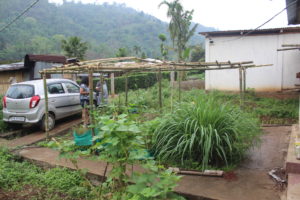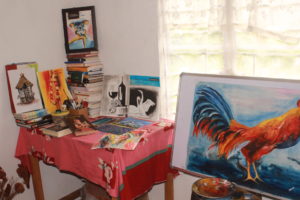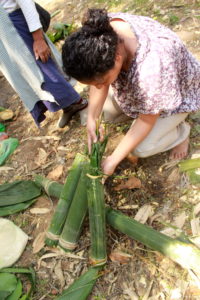by Adrian Lyngdoh (2019 cohort)
For a moment when I pause my life today, I find myself in the midst of the hospitable “Khasi” people showering upon me edible gifts from their paddy fields or home garden. Almost a year ago, I ventured into this “Abode of Clouds”, searching for the cutest yet most venomous primate in the world. I never imagined that it would be such a heart touching experience to be in this place – exploring the clan reserved forests of the tribal communities; encountering the yellow-red glowing eyes of the Bengal Slow Loris defying the darkness of the forest; and listening to the eventful folklores from the people and their amazing adventures with nature while they hunt, eat and doze in its lap. As I was being swept away by all these mystical things during my quest of understanding the beautiful and complex Loris and its habitat, the world was suddenly swept away by a mere tiny non-living material and all things came to an abrupt stop. It is as ironical as it seems!

Now I am under “village arrest”, maintaining social distancing while my heart yearns to return to the forest to find those beautiful glowing eyes. Well, there is always a silver lining! Mine is ploughing the fertile soil and growing an assortment of vegetables like peas, french beans, pumpkins, water gourds, lemon, coriander and white gourd with my colleague in the small space available at our basecamp – properly equipping ourselves for this pandemic! To add a cherry on top, we are also familiarizing ourselves with the local trees and other flora in and around our basecamp. While our compound is getting copiously green, the papers inside the house are getting washed with paintings, books are getting creased by our fingers and traditional dishes are being savored.

Our daily assignments include writing for more grants, articles and designing illustrations for our awareness program; tasks that my colleague and I undertake after taking a healthy sip of the highly valuable and endemic “Lakadong turmeric” with cow milk early morning, watching the cloud covered green hills. Apart from these daily routines, we have been busy thinking about how to improve the livelihoods of the local communities and reduce the existing pressures on the forest, primarily through beekeeping. We have acquired one beehive for ourselves to get a first-hand experience on beekeeping, so that later we can train the local people. It is also an amazing experience to know about different indigenous bee species and how easily my thoughts are drawing the attention of the local people I discuss it with.

At times like this, we could do least but understand the pandemic itself and its implications from a local context, my thoughts about which I had shared in a local newspaper. Reports of rising wildlife poaching had made me restless but the dutifulness of the villagers here in reporting the killing of wildlife to us signify their understanding of conserving wildlife and offer me a glimmer of hope for the future.
